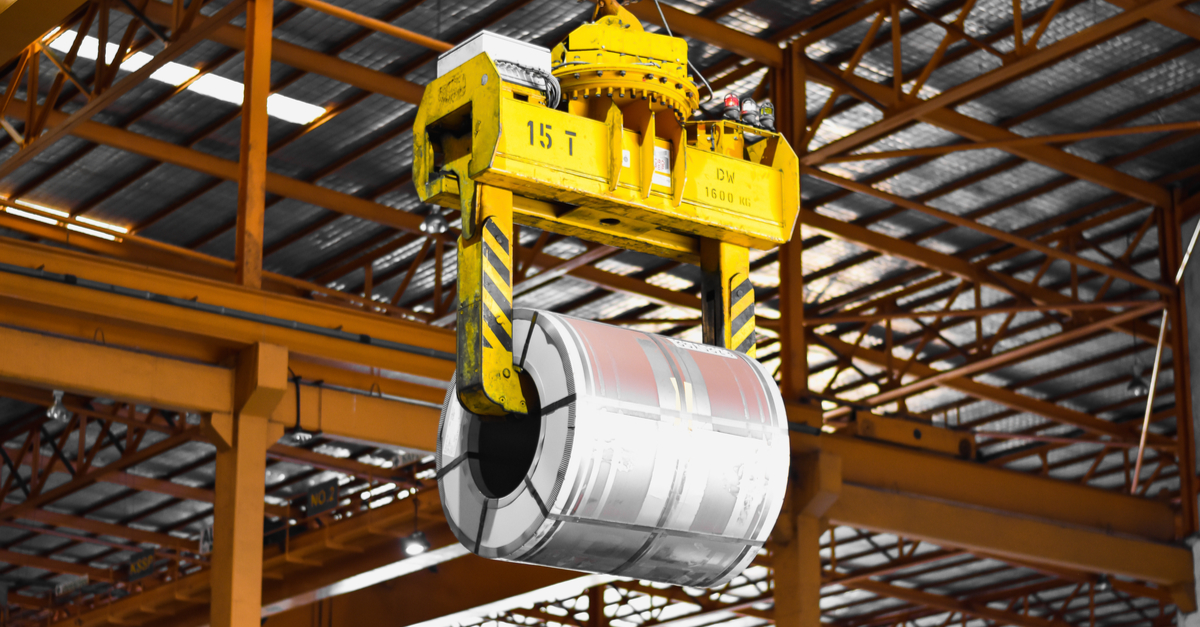
News Global Market duties 1289 20 May 2022
The EU market easily absorbs all steel exports from Ukraine
This week, the European Parliament voted to suspend all import duties for products from Ukraine. The duties are stopped for a period of one year. This includes anti-dumping duties and defensive quotas on steel imports. After this decision, any country in the world can painlessly lift any trade barriers against Ukrainian products, since the EU market absorbs the entire volume of exports from Ukraine.
The EU has shown considerable determination and commitment to assist the Ukrainian economy. At the same time, this decision does not bear risks even for the European EU market. It`s not worth to expect that steel from Ukraine will pour into Europe.
There were two anti-dumping measures against Ukrainian steel products in the EU: €60.5 duty on HRC, 8.1% duty on seamless pipes. At the time, these were very painful measures. The duty on HRC alone led to a drop in exports by 700 thousand tons per year, starting from 2017. Now, with the suspension of duties, export volumes won`t recover.
First, the potential for steel exports from Ukraine has been significantly undermined. Four out of five steel producers operate in Ukraine. Their average utilization is at 30% from prewar levels. In the destroyed Mariupol remained 40% of the steelmaking capacity, 100% of the slab production capacity, and 100% of the plate production capacity. Secondly, the production growth potential is limited by the shortage of coal. Thirdly, there are bottlenecks in logistics.
The maximum volume of exports for the coming year, for which duties have been canceled, will be 5-6 million tons, according to our expectations. It`s the traditional volume of steel exports from Ukraine to the EU.
The decision to suspend all import tariffs in the EU can bring much more benefits to the market. For example, to partially compensate the loss of 2 million tons of Russian HRC. Previously, the anti-dumping duty made HRC deliveries to the EU unattractive. In the case of an increase in utilization at Zaporizhstal, HRC exports to the EU may reach more than 1 million tons in annual terms. Finding another source of HRC supplies to EU is quite difficult, which has led to skyrocketing prices.
Increase in production volumes by other plants, the export of rebar and wire rod, where Ukraine has traditionally been a major supplier, may resume. Removing quotas would be a big plus. But these will not be volumes that can damage the market.
Deliveries to other regions traditional for Ukraine, such as Turkey, MENA, ASEAN, are unlikely. Ukrainian steelmakers have become unable to compete in the markets with the supply of Russian products with their “reputational discounts”. In markets where there are no Russian products, Britain and the United States, the cost of logistics kills the motivation for deliveries.
The EU market was the main one for the Ukrainian steel industry, where 38% of all exports were sent. It will remain so, with the only difference being that its share in total exports will grow up to 100%. What does this mean for all other markets? Any country can lift any trade barriers imposed against Ukraine, as there is very little chance of Ukrainian steelmakers exporting to markets further than the EU.
For example, it is important to realize this and convey it to the decision-making bodies in the United States, since only a decision was made there to suspend section 232. But another 9 anti-dumping measures against Ukrainian steel, covering the entire range, continue to act. That means that there is no chance for export from Ukraine to US.
The only exception is high value-added niche steel products, that could find the buyer in US. But the export volumes of such products are a priori small. The abolition of anti-dumping duties will be much more effective, especially since there are no risks for the US market, for the reasons stated above. Section 232 have not been completely canceled, but have been suspended for a period of one year. During this time, the parties shall to reach an agreement on a trade regime for the future. Ukraine needs a regime without anti-dumping duties and the US will benefit from it.
There is another important factor. The structure of export/domestic sales in Ukraine will undergo significant changes. It will be possible to forget about the export of rolled products for construction purposes for years when the program for restoring Ukraine from the consequences of hostilities starts. Large-scale construction projects will also require steel imports. While it is impossible to talk about volumes. The given impulse will create conditions for a sustainably high level of steel consumption in the country. Therefore, probably Ukraine will no longer be a major exporter. It`s worth stopping looking at local players as those who can put pressure on the global market.




